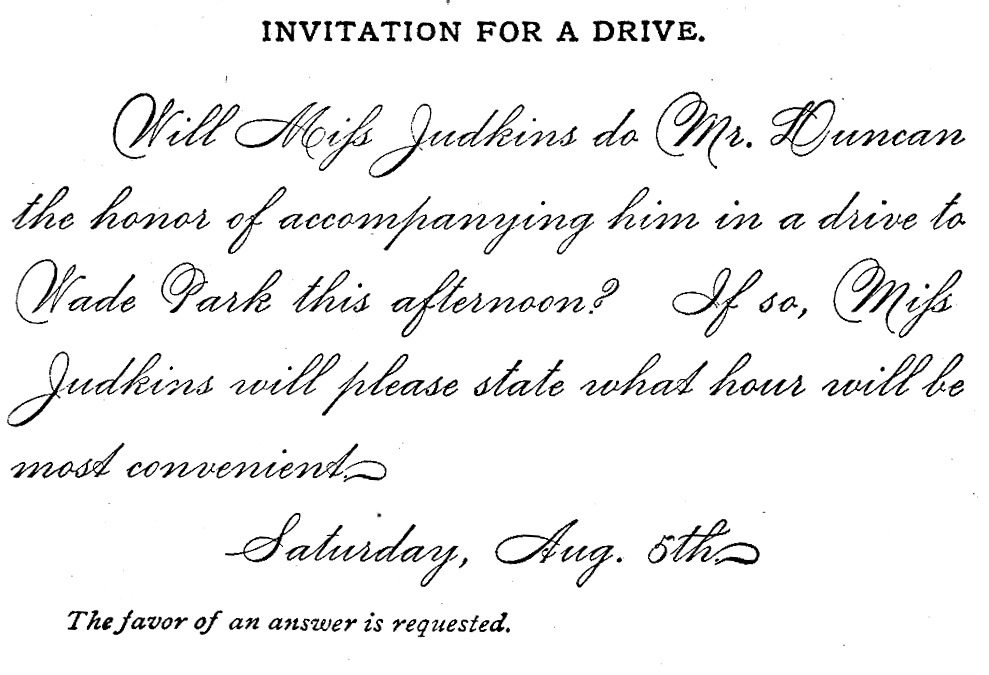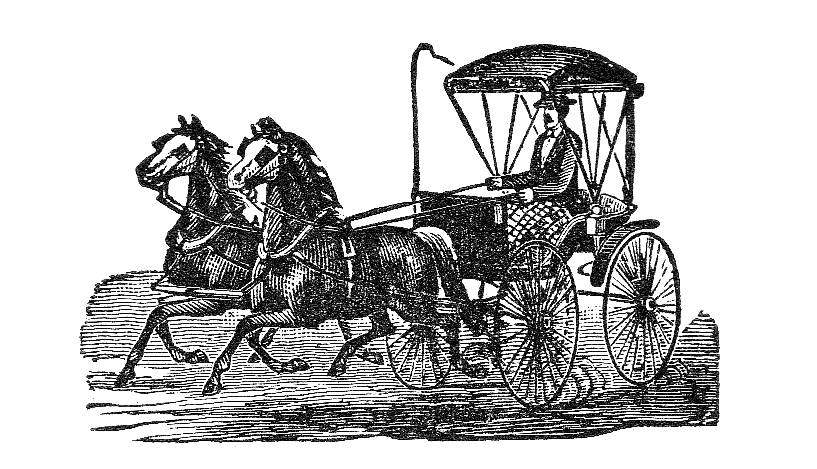I’ve got this pretty beat up book from 1891 called The Business Manual; A Complete Guide in all Mercantile and Legal Transactions and Reference Book for Every Day Use (well used during it’s time, I presume). It covers a wide variety of topics, from how to measure coal, to how to make an ice chest. It also includes handy charts of the weights of cattle and the number of years seeds retain their vitality. It tell business folk of this amazing thing called the “telephone” and describes type-writing. Did you know that “an expert can write from 90 to 100 words a minute and commands a salary of from $10 to $15 a week”?
I loved this section, though, on the “Laws of the Road.” The vehicle of choice that time? Well, the accompanying image says it all:
Here’s what the author had to say about driving around at that time:
![]() The primary law of the road is that all persons using the same must exercise due care to prevent collisions and accidents. No one can claim damages for an injury mainly caused by his own negligence.
The primary law of the road is that all persons using the same must exercise due care to prevent collisions and accidents. No one can claim damages for an injury mainly caused by his own negligence.
Vehicles of every kind, meeting on the highway must keep to the right, if at all possible. When there is no other vehicle near, a driver may use any part of the road he chooses. When two teams are going in the same direction, the one in the lead need not “turn out” if the one in the rear wishes to pass ahead, provided there is room enough at the side to pass by. Every driver is required to use moderation in speed; to keep his carriage, harness, etc., in proper condition, and always to give the right of way to a vehicle with a heavier load than his own.
Riders are not governed by any fixed rules, but are required to use reasonable prudence at all times to prevent accidents. They need less room and can make quicker movements, and are, therefore, not under as well defined rules as vehicles.
Foot-passengers have a right to use the driveway as well as the sidewalk. They must, however, with the driver and rider exercise great care to prevent injury to life and limb while thus walking in, or crossing a public road.![]()
Obviously there were fewer distractions than we have today, but these simple rules could still come in handy.
Once you’ve mastered the road rules, you can send a nice note to a sweetheart to ask her out. This example is from the same book:

